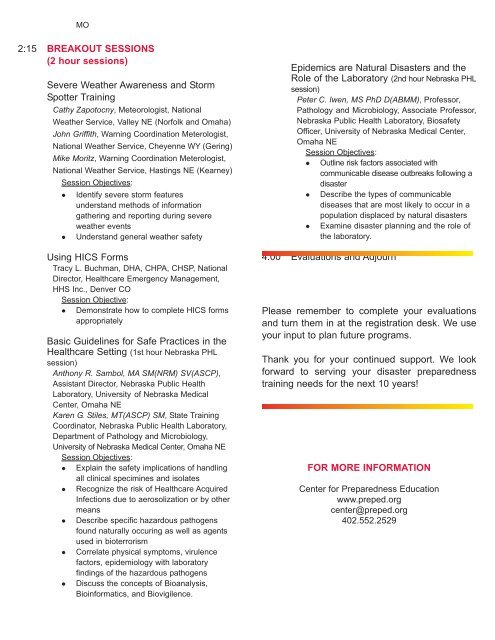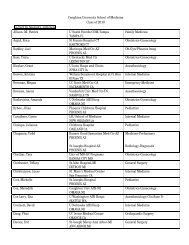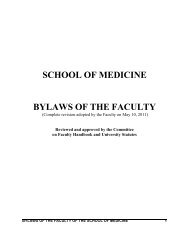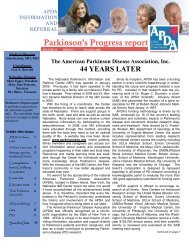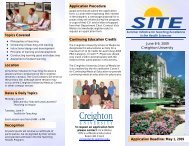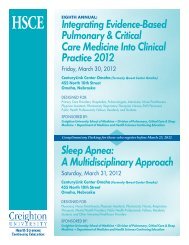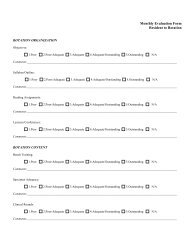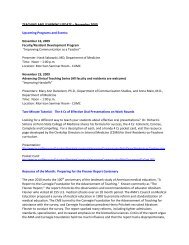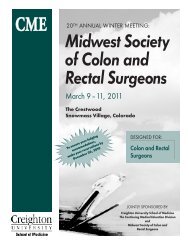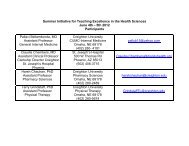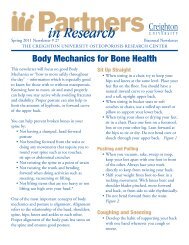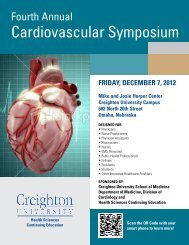10th ANNUAL PREPAREDNESS SYMPOSIA SERIES - Creighton ...
10th ANNUAL PREPAREDNESS SYMPOSIA SERIES - Creighton ...
10th ANNUAL PREPAREDNESS SYMPOSIA SERIES - Creighton ...
You also want an ePaper? Increase the reach of your titles
YUMPU automatically turns print PDFs into web optimized ePapers that Google loves.
MO<br />
2:15 BREAKOUT SESSIONS<br />
(2 hour sessions)<br />
Severe Weather Awareness and Storm<br />
Spotter Training<br />
Cathy Zapotocny, Meteorologist, National<br />
Weather Service, Valley NE (Norfolk and Omaha)<br />
John Griffith, Warning Coordination Meterologist,<br />
National Weather Service, Cheyenne WY (Gering)<br />
Mike Moritz, Warning Coordination Meterologist,<br />
National Weather Service, Hastings NE (Kearney)<br />
Session Objectives:<br />
l Identify severe storm features<br />
understand methods of information<br />
gathering and reporting during severe<br />
weather events<br />
l Understand general weather safety<br />
Using HICS Forms<br />
Tracy L. Buchman, DHA, CHPA, CHSP, National<br />
Director, Healthcare Emergency Management,<br />
HHS Inc., Denver CO<br />
Session Objective:<br />
l Demonstrate how to complete HICS forms<br />
appropriately<br />
Basic Guidelines for Safe Practices in the<br />
Healthcare Setting (1st hour Nebraska PHL<br />
session)<br />
Anthony R. Sambol, MA SM(NRM) SV(ASCP),<br />
Assistant Director, Nebraska Public Health<br />
Laboratory, University of Nebraska Medical<br />
Center, Omaha NE<br />
Karen G. Stiles, MT(ASCP) SM, State Training<br />
Coordinator, Nebraska Public Health Laboratory,<br />
Department of Pathology and Microbiology,<br />
University of Nebraska Medical Center, Omaha NE<br />
Session Objectives:<br />
l Explain the safety implications of handling<br />
all clinical specimines and isolates<br />
l Recognize the risk of Healthcare Acquired<br />
Infections due to aerosolization or by other<br />
means<br />
l Describe specific hazardous pathogens<br />
found naturally occuring as well as agents<br />
used in bioterrorism<br />
l Correlate physical symptoms, virulence<br />
factors, epidemiology with laboratory<br />
findings of the hazardous pathogens<br />
l Discuss the concepts of Bioanalysis,<br />
Bioinformatics, and Biovigilence.<br />
Epidemics are Natural Disasters and the<br />
Role of the Laboratory (2nd hour Nebraska PHL<br />
session)<br />
Peter C. Iwen, MS PhD D(ABMM), Professor,<br />
Pathology and Microbiology, Associate Professor,<br />
Nebraska Public Health Laboratory, Biosafety<br />
Officer, University of Nebraska Medical Center,<br />
Omaha NE<br />
Session Objectives:<br />
l Outline risk factors associated with<br />
communicable disease outbreaks following a<br />
disaster<br />
l Describe the types of communicable<br />
diseases that are most likely to occur in a<br />
population displaced by natural disasters<br />
l Examine disaster planning and the role of<br />
the laboratory.<br />
4:00 Evaluations and Adjourn<br />
Please remember to complete your evaluations<br />
and turn them in at the registration desk. We use<br />
your input to plan future programs.<br />
Thank you for your continued support. We look<br />
forward to serving your disaster preparedness<br />
training needs for the next 10 years!<br />
FOR MORE INFORMATION<br />
Center for Preparedness Education<br />
www.preped.org<br />
center@preped.org<br />
402.552.2529


